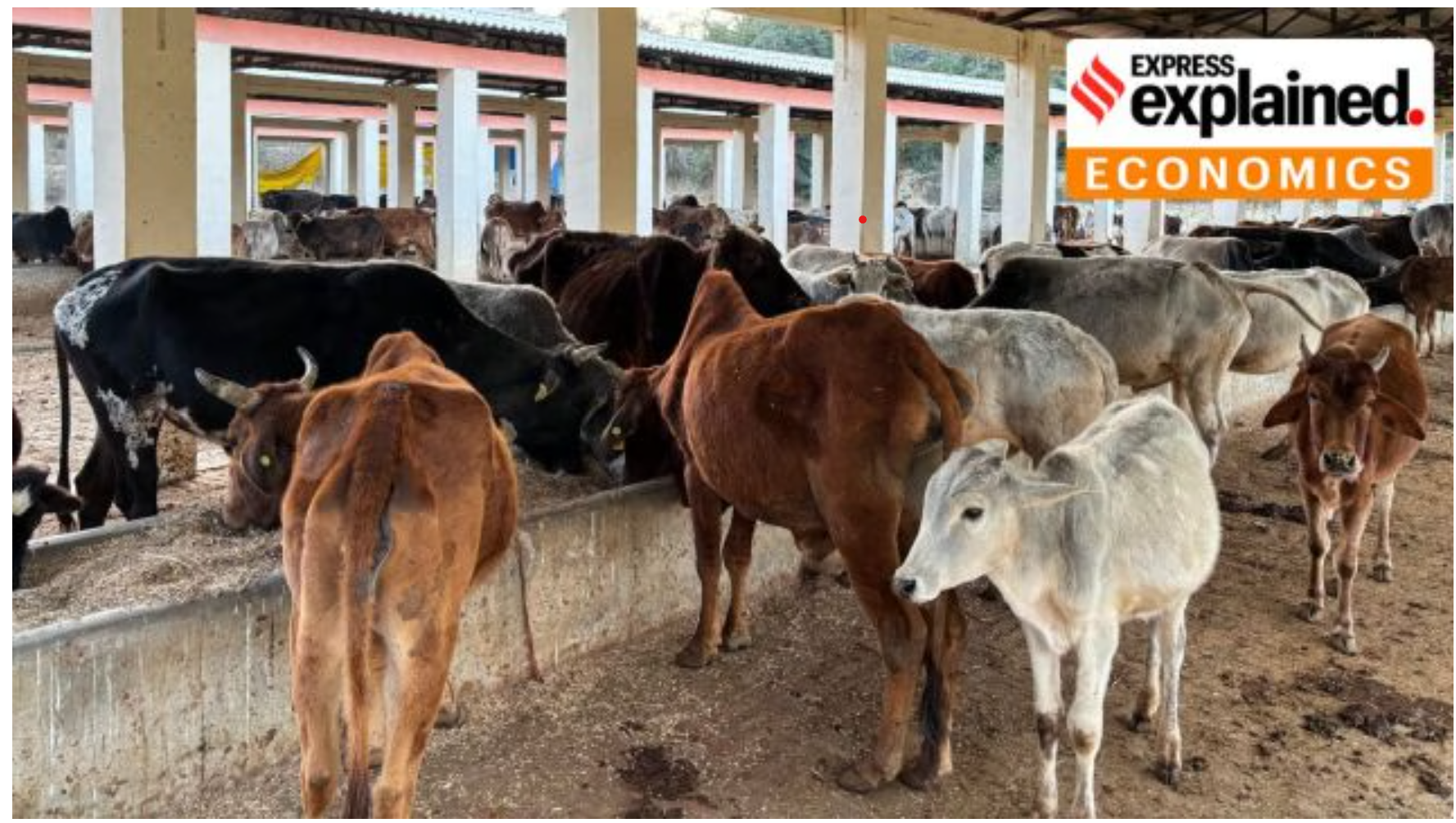21st Livestock Census

- 27 Oct 2024
In News:
The Livestock Census is a crucial tool for understanding the current status of India’s livestock sector and its contribution to the economy and society.
What is the Livestock Census?
- The Livestock Census is a nationwide survey conducted every five years to assess the number, species, breed, age, sex, and ownership status of domesticated animals and poultry, including stray animals.
- Purpose: It helps in collecting comprehensive data about the livestock population and their role in the economy and society.
- First Census: The first livestock census was conducted in 1919, and this is the 21st edition.
- Next Census: The 21st Livestock Census will be conducted between October 2024 and February 2025 by approximately 87,000 enumerators across 30 crore households in India.
Animals Covered in the Census
- The census will account for 16 species of animals, including:
- Cattle, Buffalo, Mithun, Yak, Sheep, Goat, Pig, Camel, Horse, Ponies, Mule, Donkey
- Dog, Rabbit, Elephant
- Poultry: Fowl, Chicken, Duck, Turkey, Geese, Quail, Ostrich, and Emu
- The census will also collect data on 219 indigenous breeds of these species recognized by the ICAR-National Bureau of Animal Genetic Resources (NBAGR).
Objectives of the Livestock Census
- Economic Contribution: The livestock sector contributes approximately:
- 30% of the Gross Value Added (GVA) of the agricultural sector
- 4.7% of India's overall GVA
- It plays a crucial role in rural employment, particularly in poultry and animal husbandry.
- Policy Formulation and Planning:
- The data from the census is critical for formulating and implementing policies related to livestock, ensuring sustainable growth in the sector.
- It helps in monitoring and estimating GVA from livestock.
- Sustainable Development Goals (SDGs):
- Provides vital data for tracking the progress towards Goal 2 of SDGs (Zero Hunger) and Target 2.5, which focuses on maintaining genetic diversity in livestock, particularly addressing local breeds at risk of extinction (Indicator 2.5.2).
- Sectoral Monitoring:
- The census helps in monitoring the performance and health of India’s livestock sector, which is vital for ensuring food security, rural livelihoods, and economic growth.
Key Features of the 21st Livestock Census
- Digitization:
- Like the 2019 Census, this year’s census will be fully digitized, with data collected via a mobile application.
- Digital Monitoring: A dashboard will monitor progress at various levels, and the latitude and longitude of the data collection locations will be recorded.
- A software-based livestock census report will be generated to streamline analysis.
- New Data Points:
- For the first time, data on pastoral animals and pastoralists will be collected, focusing on their socio-economic status and livestock holdings.
- Granular Data: The census will gather information on:
- Proportions of households that rely on livestock for major income.
- Gender-based data on stray cattle.
- Extended Scope:
- In addition to animal population statistics, the census will also focus on the socio-economic contributions of the livestock sector, gender inclusion, and employment.
Significance of the Livestock Census
- A Comprehensive Livestock Profile:
- Provides a holistic view of livestock population and the interlinkages between animal husbandry, agriculture, and rural economies.
- Assists in the management and preservation of indigenous animal breeds.
- Informed Decision-Making:
- Helps policymakers, researchers, and development organizations in formulating strategies for sectoral growth, genetic diversity preservation, and livelihood enhancement for rural communities.
- Monitoring Livestock Health:
- The census helps in tracking the health and sustainability of India’s livestock population, which is essential for ensuring food security and preventing animal diseases.
Findings of the 2019 Livestock Census
- Total Livestock Population: 535.78 million
- Cattle: 192.9 million
- Goats: 148.88 million
- Buffaloes: 109.85 million
- Sheep: 74.26 million
- Pigs: 9.06 million
- Other species contributed a small fraction to the total livestock population (0.23%).
